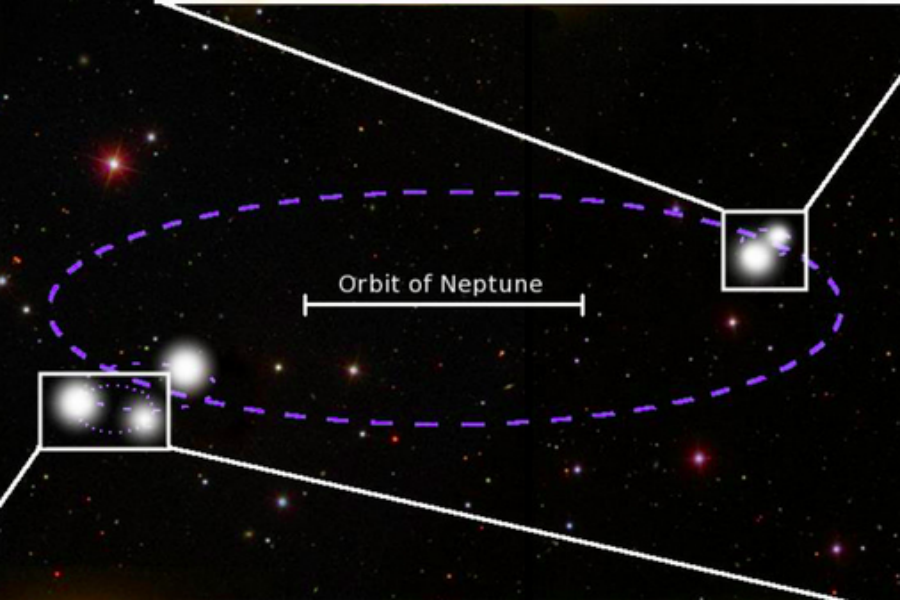Five-star formation find would put 'Star Wars' makers to shame, astronomer says
Loading...
250 light years away from Earth, there is a sky that might embarrass "Star Wars" creator George Lucas.
So says Dr. Markus Lohr, who is part of a research team that has discovered a unique five star formation in Ursa Major, and whose findings were published Wednesday in Astronomy & Astrophysics.
About a third of stars are found in pairs or systems of multiples, according to experts. Five stars connected is practically unheard of; the astronomers from Open University in the United Kingdom who wrote the report claimed only five known doubly eclipsing quadruple formations at the time of their findings.
"This is a truly exotic star system. In principle there's no reason it couldn't have planets in orbit around each of the pairs of stars,” said co-author Dr. Lohr to BBC News. “Any inhabitants would have a sky that would put the makers of Star Wars to shame – there could sometimes be no fewer than five Suns of different brightnesses lighting up the landscape.”
The star system was first observed by relatively low-cost, low-tech telescopes located in the Canary Islands and South Africa that capture images of much of the sky every few minutes.
The images are then observed over the course of years. Astronomers plot the brightness of individual stars over time, called light curves.
Data revealed the existence of two binary stars, one of which was a so-called contact binary.
Lohr said that these contact binaries were stars that orbit so closely they share an outer atmosphere.
The other star pair – a detached binary – has a separation distance of some three million kilometers, or about twice the distance across of the sun. The two binaries orbit in the same plane at a distance of 21 billion kilometers.
Closer study of the two binary star systems revealed a fifth star, which is attached to the detached binary star.
The two binary star pairs appear to be orbiting on the same gravitational plane, according to the report, which states that the stars may have originally formed from a single disk of gas and dust, which clumped together as gravity pulled the matter apart. This unique system, well positioned for astronomers to observe, can help us better understand how stars and planets, including our own, came to be.
Researchers gathered enough data on the five stars to know their masses, sizes, and temperatures. All the stars are smaller and cooler than our Sun, but the system together is bright enough to be visible by small telescopes. Amateur astronomers could see the eclipses for themselves.
Within the formation, Lohr said, "days would have dramatically varying light levels as the different stars were eclipsed. They would though, miss out on night for a large part of their 'year,' only experiencing darkness (and a night sky) when the stars were on the same side of their world."








